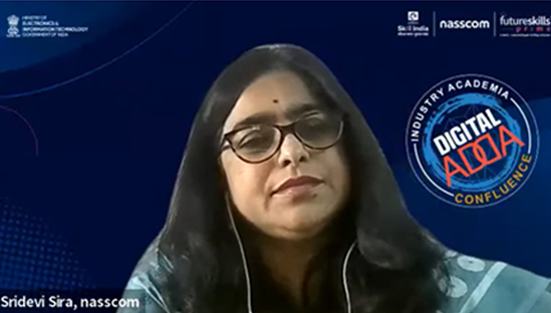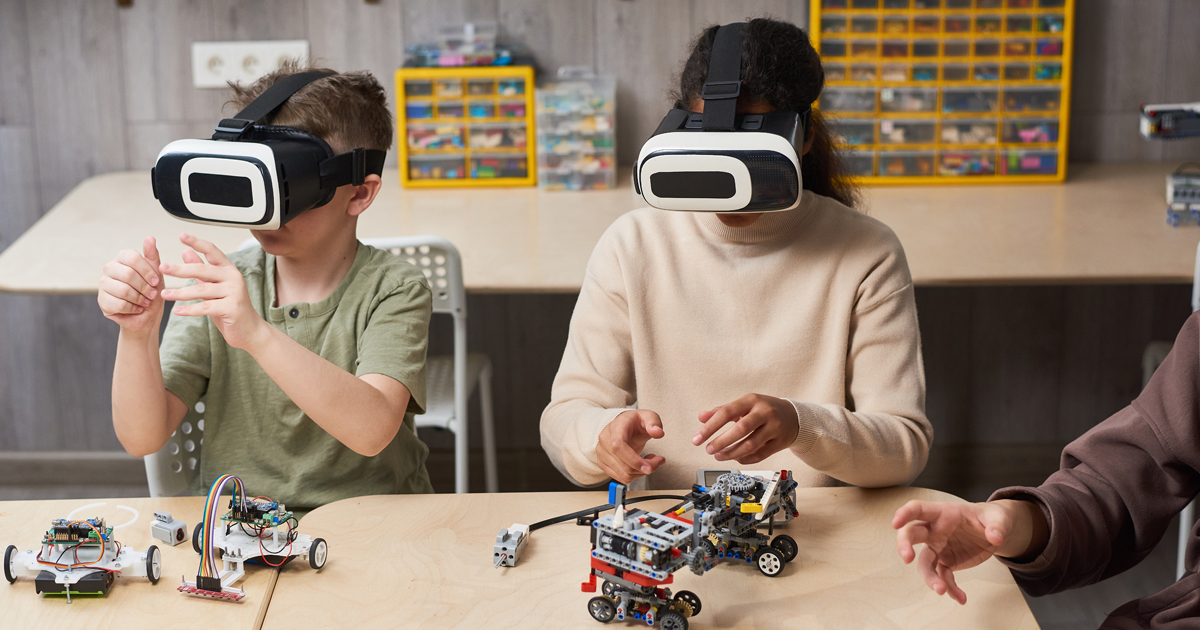Key to bridge Skills Talent Gap - Industry Academia interaction
Technology is evolving at a dizzying speed and the skills needed to succeed in the workforce are changing with it. As a result, there is a growing skills gap between what employers need and what graduates are learning. This gap is a major challenge not just for the academia and industry but for the country’s progress as a whole and it is one that all stakeholders must work together to address.
Nasscom FutureSkills Prime organised an Industry Academia Digital Adda Confluence round table session where leaders from Academia – Dr Sayalee Gankar, Vice Chancellor, D.Y.Patil University; Akila Muthuramalingam, Principal, KPR institute of Engineering and Technology; Dr Arun Mudhol, Director, VTU and leaders from Industry - Tracy Austina Z, Head - TTL TechVarsity, Tata Technologies & Mr Ashok Balasubramanian, CEO – Open Weaver, participated. The session was moderated by Sridevi Sira from nasscom. The objective of this exclusive closed-door session was to bring leaders in industry and academia together to discuss means to address the skills gap between the talent being prepared and talent required.

Role of Academia
Google is a trillion-dollar company and has been referred to as the most powerful company in the world; yet the emergence and continuous evolution of ChatGPT and other Generative AI tools has put a question mark on its existence. In this decade of disruption, no one can afford to be complacent. There are several things that academia can do to help bridge the skills gap.
- To start with, the curricula need to be aligned to the requirement of employers. FutureSkills Prime offers industry curated courses on its platform https://futureskillsprime.in/
- With the plethora of online courses available, faculty’s role has enhanced to become a facilitator of learning enablement. Sometime faculty maybe resistant to change and to upskill themselves. Faculty needs to be trained in two aspects – soft skills, which include a mindset to accept change around them and a passion to teach. Secondly, they need to upskill in technical skills so that they can use the latest digital tools and techniques, incorporate them in the lesson plans and bring students to class. Dr Gankar shared an initiative where faculty were pushed to take up courses as upskilling and getting certified was made a condition for appraisal.
- Similarly, it is also critical for students to gain practical skills and hands-on experience through lab work, project work, internships and co-ops. Tracy highlighted that most industries operate in a multidisciplinary environment. Students need to have solid domain knowledge and they should be able to apply it. Industry leaders agreed that demonstration of skills is table stakes for potential job aspirants.
Task for Industry
Recent research reports suggest that lack of availability of skilled talent has become a major challenge for many businesses. Recognising this challenge, industry can play a key role in making sure that it has future-ready talent when graduates pass out. One way to do this is to train faculty in latest emerging technologies. This will lead to a multiplier effect as their learnings percolate to hundreds and thousands of students. This can be done through workshops, conferences, and other forms of professional development. Industry can also provide internships and co-ops for students, which will give them the opportunity to gain real-world experience. The best thing would be to have industry join the Board of Studies or the advisory committees in higher education institutions where they can guide academia on the curriculum design and implementation.
Best Practices
Along with curriculum design, KPR College of Engineering & Technology has also implanted a skill design framework, so that students are able to meet industry’s talent requirements. Psychometric assessments start from the first year and students are trained as per their level. Python, Java, JavaScript, AR/VR, digital marketing, full stack, etc are skills inculcated in students over the four-year program and topped up with project work so that students are expert in domain skills. Akila shared that the students have been getting very good placements.
Conclusion & Takeaways

There is a need to work together to identify the skills that are needed for the future, and to develop programs and initiatives that will help students develop those skills. nasscom has been enabling a culture of collaboration and creating multiple events where academia and industry can interact. By working together, we can empower a workforce that is prepared to meet the challenges of the 21st century.
Here are some specific insights for academia and industry:
Academia:
- Stay up-to-date on the latest trends and technologies in your field
- Incorporate these trends and technologies into your courses
- Provide more opportunities for students to gain hands-on experience, such as through internships and co-ops.
Industry:
- Provide opportunity for faculty to learn about industry trends
- Provide internships and co-ops for students
- Sponsor hackathons etc and collaborate with academia on R&D projects
To see the complete session and get all the insights shared by the panel, click here:
About the FutureSkills Prime Programme:
FutureSkills Prime, a collaborative effort by nasscom and MeitY, serves as India's technology skilling hub with the objective of transforming the nation into a Digital Talent Nation. The program facilitates widespread access to learning, empowering both students and professionals to enhance their digital expertise and professional competencies. The comprehensive range of courses available through FutureSkills Prime encompasses a diverse array of digital technologies and vital professional skills.
Written by Kaamna Jain


